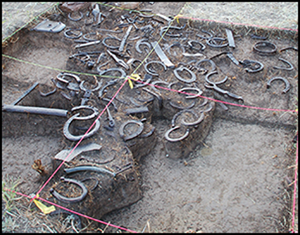Published online by Cambridge University Press: 19 October 2020

In Red Canyon, in the foothills of the Wyoming Rocky Mountains, lie three archaeological sites: a stagecoach station, a tipi ring campsite and a series of faded petroglyphs. Collectively, these three sites offer the opportunity to bridge the divide between the prehistoric and the historic, and to explore multiple forms of cultural entanglement in the American West. This article challenges the scholarly homogenisation of cultural diversity in this region by combining the narratives of these three archaeological sites to reconsider dichotomies between Native and Euro-American, immigrant and resident, and acculturation and tradition.